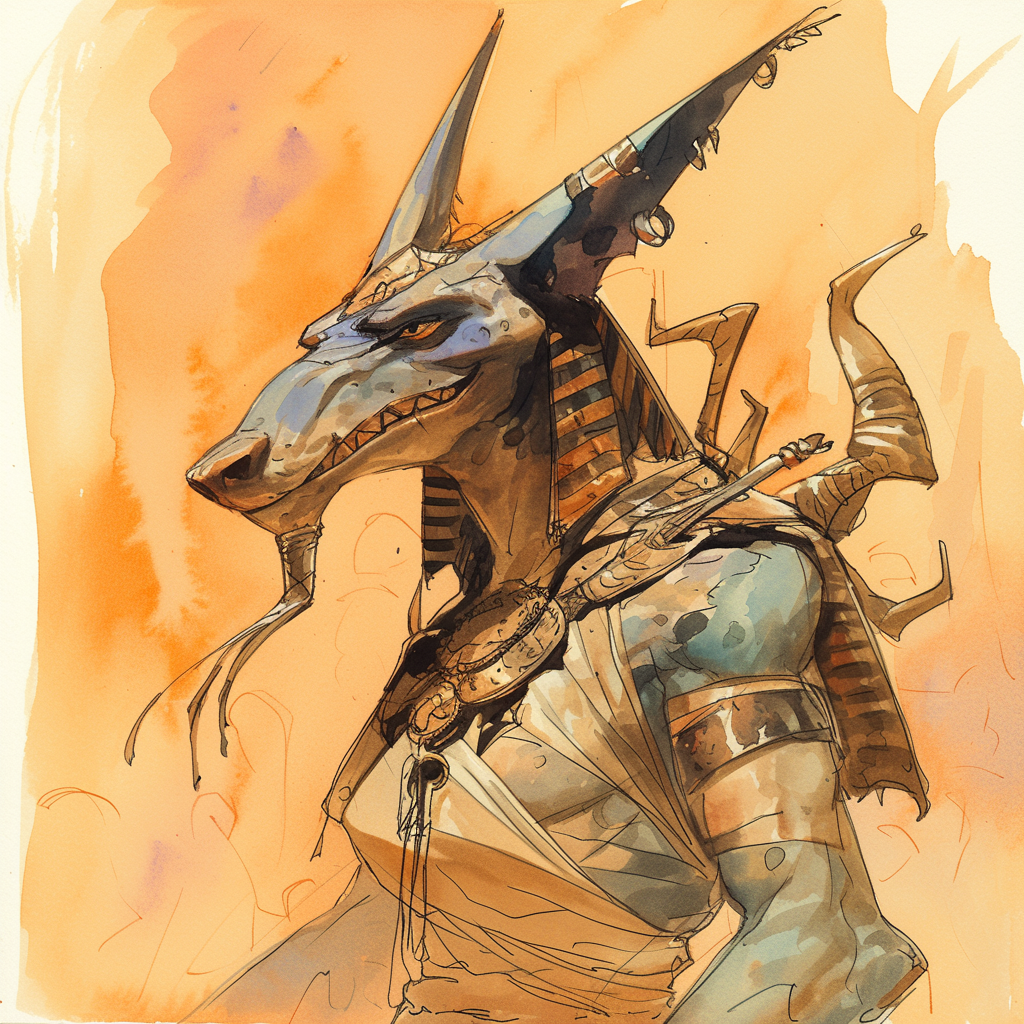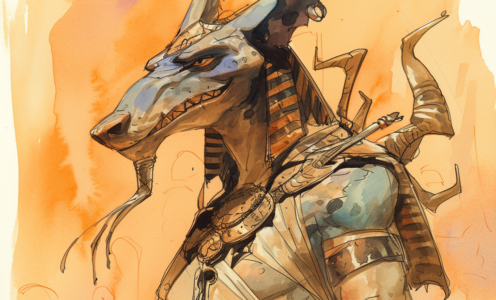Wepwawet
Apuat, Osiris’ Hand, Guide of the Dead. N demipower of survival, warfare, psychopomp of the dead (He/Him)
Pantheon: Egyptian
Symbol: A black jackal
Realm: Arcadia / Buxenus / Heliopolis / Memphiria, also Outlands / Underlands
Known Proxies: None
Wepwawet, sometimes known as Apuat, is no stranger to shifting his spheres of influence in order to stay alive. Like his symbolic animal, the jackal, Wepwawet’s the type to purvey the current situation and do what he can to pull through. Ages ago, before the birth of Younger Horus, Wepwawet’d situated himself as the god of war, aiding his followers before, during, and even after a battle. After Horus began dominating as the symbol of war, Wepwawet petitioned Elder Horus (Elder Horus calls himself Osiris these days) for a new role. Osiris gladly accepted, it was his son who replaced Wepwawet after all. The jackal-headed god was then assigned as guide to the dead on their way through the Netherworld.
Not long after Wepwawet found survival as a guide did Osiris’ ability to communicate outside of the Netherworld began to wane. Wepwawet stepped in and offered his help as a messenger. Osiris was again gracious for the help and gave his guide this honor, bolstering Wepwawet up from his stint as a demigod back up to a lesser power. Lastly, when Anubis left the pantheon as a power and made its strange transformation in the Astral, Wepwawet took on the role of psychopomp. In his current state, Wepwawet acts as the guide and guardian to the deceased, and even replaces some of Osiris’ power as a guardian of the Netherworld.
Some say Wepwawet’s still a scavenger at heart like his animal totem, groping for whatever portfolio isn’t taken or is even partly available. Others call him an opportunist, doing what he can to make do and avoid being among the god-isles of the Astral plane. Depending on which aspect they follow, you’ll hear all manner of stories from the priests, so most say it’s best to just let the matter lie.
Duties of the Priesthood
Priests of Wepwawet are most often found as guides through the Astral Plane and Osiris’ home, Memphiria. They operate in many services held for the dead and images dedicated to the dead and the powers. An important one is titled the Opening of the Mouth in which the priests consecrate a particular statue or image so that it is ready to receive any offerings proffered before it. Some priests insist on Wepwawet’s influence in battle, and thus may be found alongside the greater entourage of Horus’ clergy during an Egyptian conflict.
Acting as guides and messengers, Wepwawet’s priests are often sought out, especially when the duty involves the Astral Plane or other “underworlds.” Because of Wepwawet’s association with protection and assistance to the dead, his priests will never harm or loot an Egyptian tomb and are hard pressed to do the same to non-Egyptian tombs.
The most common offerings to Wepwawet are funerary pottery filled with such items as embalming ingredients and other burial equipment, or sand from outside an Egyptian tomb.
Priests of Wepwawet adorn themselves in hieroglyphs describing their god and his many deeds. The holy symbol is worn at the neck, stitched into the priest’s clothing, or most popularly, set atop a walking stick.
Source: Zak Arntson and Jon Winter-Holt, with thanks to Alex Nuta


